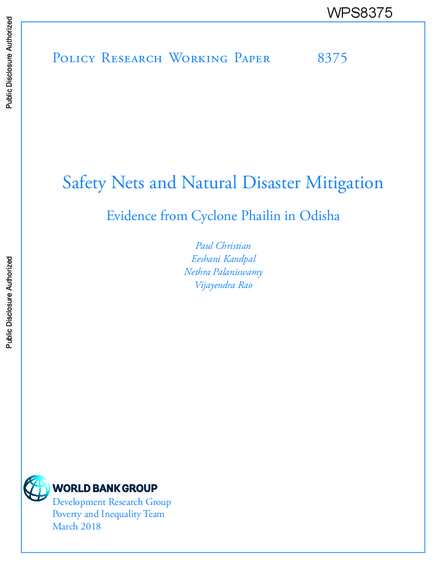
To what degree can vulnerability to extreme weather events be mitigated by access to a rural livelihoods program, particularly with regard to the impacts on women? This paper addresses this question through a natural experiment arising from two independent but overlapping sources of variation: exposure to a devastating cyclone that occurred in the Bay of Bengal region of India and the staggered rollout of a rural livelihoods intervention. Comparisons from household surveys across communities more or less exposed to the storm before and after the introduction of the program reveal that the storm led to significant reductions in overall household expenditure, and that these reductions were indeed the largest for women, adding to the emerging evidence for the frequently-posed hypothesis that women bear the brunt of the effects of disasters on overall household consumption. Participation in the livelihoods program mitigated some of the reductions in household nonfood expenditure and women's consumption, but not on food expenditure. These results from a densely populated region whose topography makes it particularly vulnerable to storms can inform future policy approaches and aid in modeling the impact of these policies on the effects of climate change.